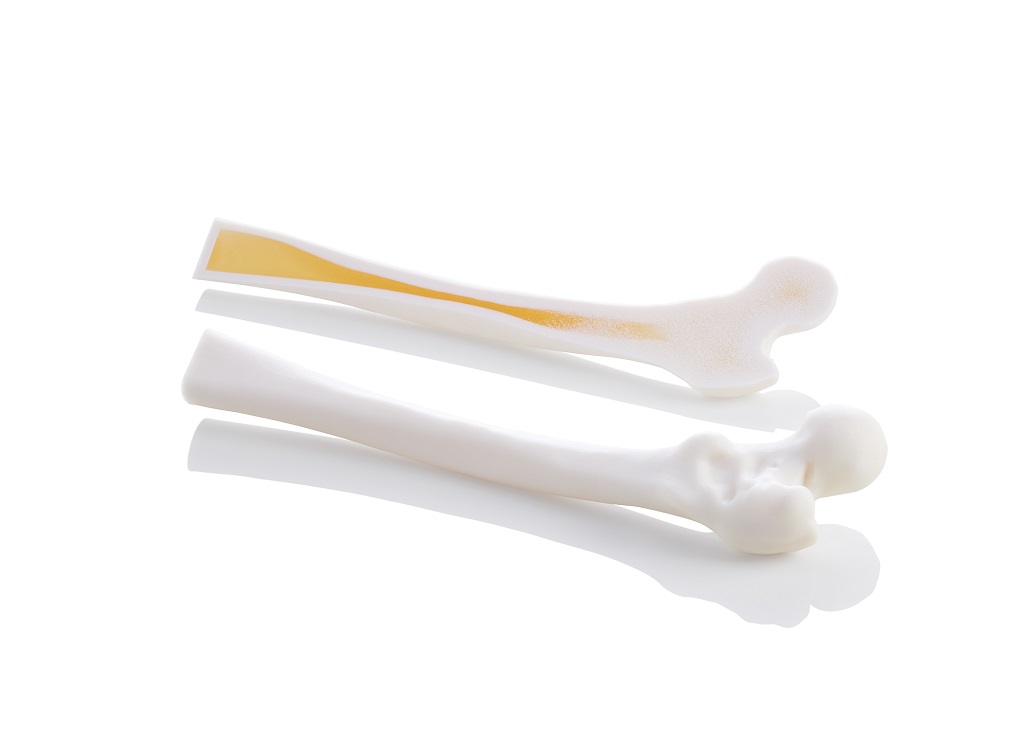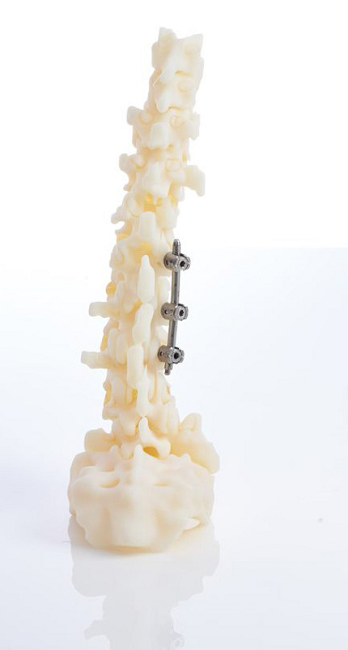
3D printed medical models are becoming ever more realistic, as Stratasys shows with its new biomechanically realistic bone capability.
Digital Anatomy 3D Printing
Stratasys introduced its Digital Anatomy portfolio last year. Upon release, the portfolio included the J750 Digital Anatomy 3D printer as well as advanced materials and software targeting the creation of realistic medical models.
“This is the first solution we are releasing for the market that has been specifically designed for the healthcare space, designed on feedback from healthcare customers and hospitals we currently work with today,” Scott Drikakis, Medical Segment Leader at Stratasys, told us last year.
A vital point of the Digital Anatomy introduction represented a new step for the company, though, through an extreme focus on validation. To that end, Drikakis explained to us:
“What we’ve done that’s unlike anything Stratasys has done in the past is having third parties validate how these materials respond. For TissueMatrix for example, these third parties are validating how these materials compare for tear resistance, cutting resistance, and suture pull force, comparing these models to native tissue.”
TissueMatrix was one of the initial materials introduced in the Digital Anatomy portfolio. It allows for a 3D printed model to have the look and feel of actual tissue. Because of the focus on validation, that look and feel is also quite precise.
There’s no shortage of reasons for medical models to become more realistic: healthcare professionals can prepare for surgeries and other procedures; medical students can train again and again without needing to rely on donor cadavers; patients can get hands-on with their own anatomy and really understand what’s happening; medical device makers can conduct testing and train medical providers on those new devices.
Medical 3D printing, validated by medical professionals, offers all these benefits and more — and last year’s initial Digital Anatomy introduction was just a beginning. Drikakis noted in our conversation that the team had an “extremely dialed in three-year plan” for further launches. From that first soft cardiology tissue focus, the Digital Anatomy portfolio is now growing.
Biomechanically Realistic Bone

This week, Stratasys enhanced its offerings with new capabilities. The J750 Digital Anatomy 3D printer now has advanced bone capabilities that go well beyond a good-looking model. These capabilities offer research-backed biomechanically realistic properties.
The announcement of the new capabilities notes:
“The software upgrade enables the systems to mimic porous bone structures, fibrotic tissue, and ligaments so medical professionals can create models that behave just like human bone.”
Bones are deceptively complex structures, especially internally. Over the years, many designers working with 3D printing and generative design have turned to biomimicry to take inspiration from the uniquely light, porous, strong structuring. Going beyond biomimicry and inspiration, the new software updates and BoneMatrix material allow for impressively accurate orthopedic models. These models can offer some properties, which Stratasys notes include:
- Dense to porous
- Normal to degenerated
- Flexible to stiff
3D printed skulls, long bones, ribs, facet joints, nerves, vertebra, and other anatomical models can now look, feel, and act like the real thing — no cadaver required. That is, because of the appropriate bone density, these models “behave like native bone when force is applied, allowing for accurate results from discectomy, drilling, reaming or sawing,” as the release notes.
“We believe that better preparation leads to better clinical outcomes,” said Vice President Osnat Philipp, who leads the global healthcare team at Stratasys. “The mechanical properties of bone are so fundamental to the ability of our skeletons to support movement, provide protection for our vital organs and ultimately affect our quality of life. Being able to 3D print models that are biomechanically accurate and unique to each patient is critical to that preparation.”
Among the clinical validation behind the new introductions were research done at the Computational Mechanics and Experimental Biomechanics Lab at Tel Aviv University, as well as at the Technion Institute of Technology’s Materials Science and Engineering Laboratory in Israel.
A medical director at a Florida children’s hospital also laid out some of the benefits of using advanced models in pediatric training and education. She explains:
“The opportunities seem endless to me because doctors can ‘operate before they operate’. It’s going to decrease surgical time, it’s going to decrease morbidity and mortality, and help us decrease anesthesia time, which is better for brain development.”
Via Stratasys
